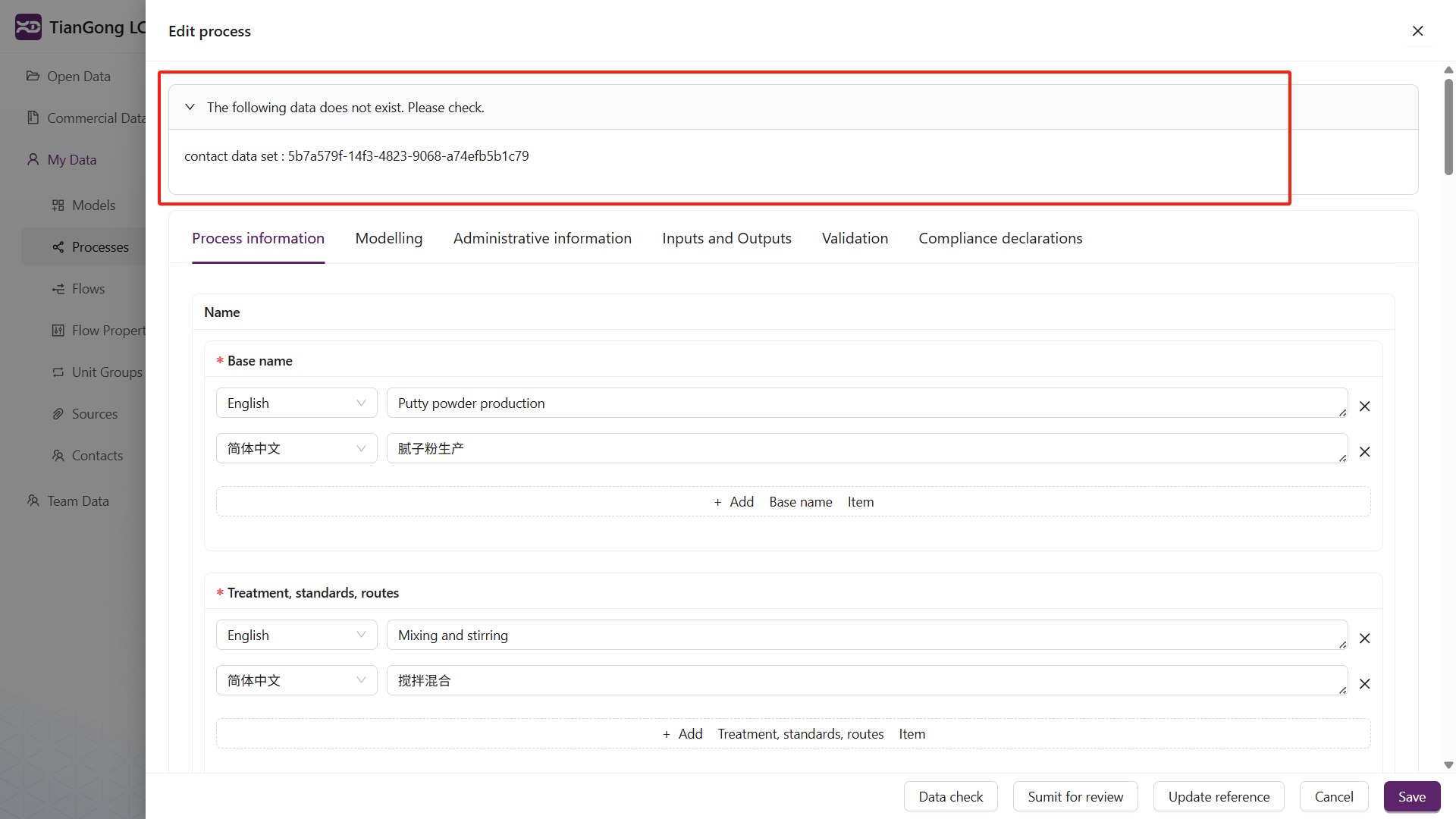Data Review
Data review safeguards dataset quality by checking completeness, traceability, and modelling assumptions. This guide outlines the roles, workflow, supporting tools, and common blockers involved.
Roles & responsibilities
| Role | Key actions | Main screens |
|---|---|---|
| Author | Prepare data, run self-checks, submit for review, fix feedback | “My Data” editor, message centre |
| Reviewer | Inspect submissions, verify references, approve or request changes | “Review” list, message centre |
| Team admin | Assign reviewers, monitor progress | “My Team”, status filters |
Review workflow
-
Prepare & self-check
- Click
Data checkin the process/model editor to validate required fields before submission. - Address any highlighted issues immediately.

- Click
-
Submit for review
- Use
Submit for review; the system re-runs the validation. - If problems remain, a modal lists each blocking item—resolve them and resubmit.

- Use
-
Review execution
- Reviewers receive notifications in the message centre and can use the status filters to locate pending items.
- Verify references, source quality, language completeness, and modelling assumptions.
-
Feedback & resolution
- Approved datasets move forward to publication.
- Returned datasets include reviewer notes; authors edit the content and submit again.
Status filters
Use the dropdown in the “Review” list to track progress:
- ✅ All: Every record, regardless of state.
- 🕒 Unreviewed: Not yet submitted or assigned.
- 🔄 In review: Awaiting reviewer action.
- ✔️ Reviewed: Completed (approved or returned with comments).

Common blockers
- Missing references: Ensure flows, previous versions, and sources are correctly linked.
- Incomplete language fields: Provide both Chinese and English entries where required.
- Insufficient source detail: Include author, title, publication, year, and DOI/URL; upload attachments if needed.
- Custom units/properties misuse: Confirm custom definitions align with LCIA requirements; prefer standard assets.
If an issue persists, coordinate with the assigned reviewer or your team administrator, and consult the FAQ for known constraints.